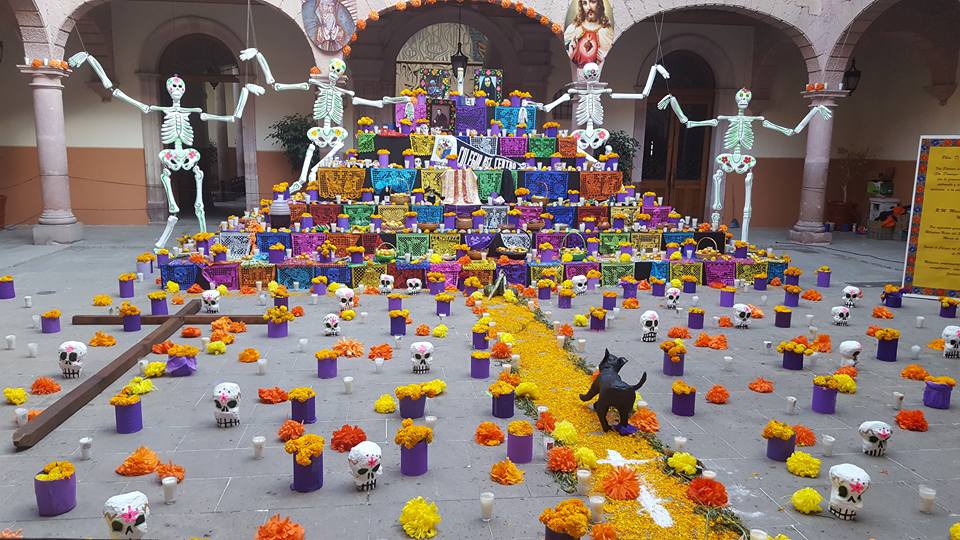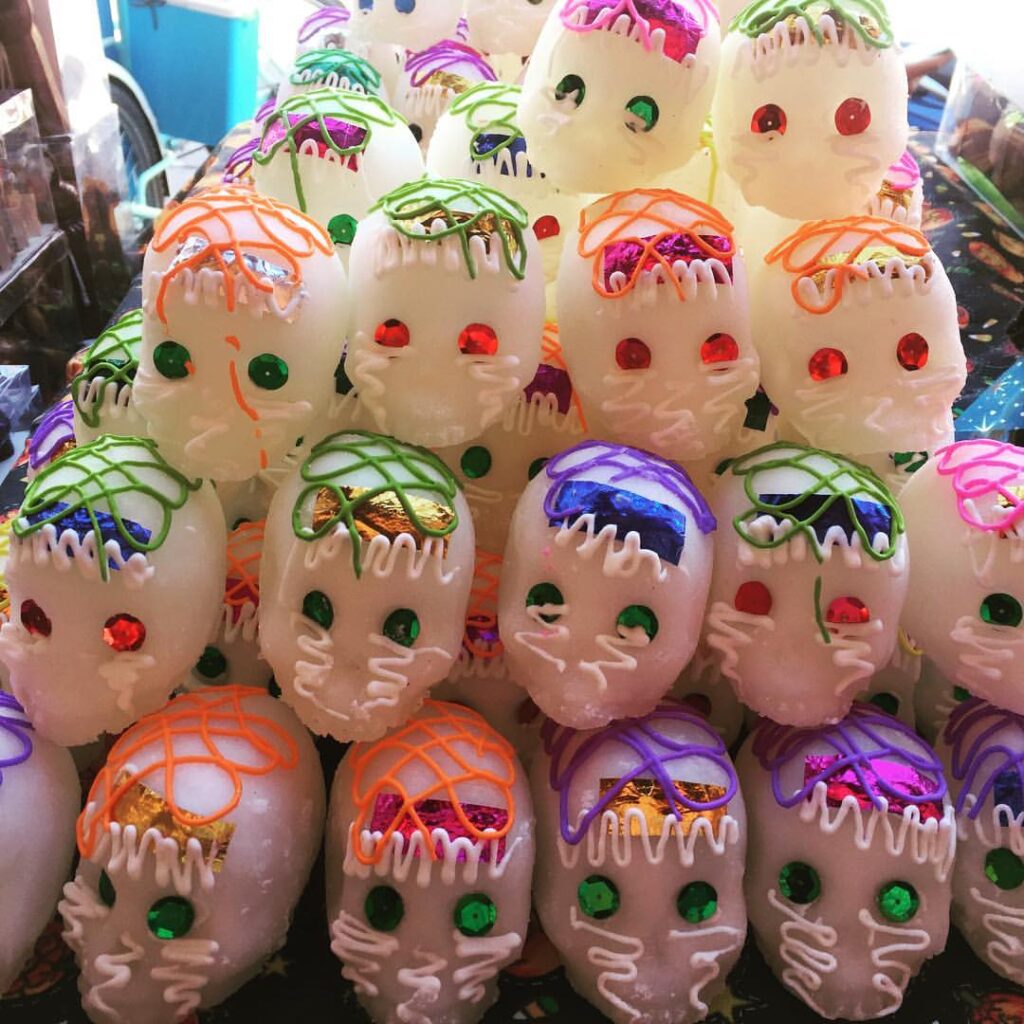An invite to a Diwali-Día de los Muertos Dance Party showed up in my Facebook events last week.
Now, don’t get me wrong. I love a good dance party. But the image of saree-clad Catrinas dancing to Beyoncé’s “Cuff It” begs the question: What’s the impact of consumerism on assimilation?
As a Mexican-Puerto Rican girl born in Detroit in the late 1960s, my experience of Halloween was disconnected from its historical Samhain roots and the Celtic Aos sí.
Neither of my parents had ever put on a costume nor participated in this holiday in their own childhoods, but they wanted me and my sisters to be “American” which, on October 31, meant going trick-or-treating.
As we walked door-to-door in our working-class neighborhood, we each carried a plastic jack-o’-lantern to collect our bounty as reward for repeating the time-tested refrain.
At that time, my family didn’t have money for purchasing costumes, so either my mom sewed them, or we used found items in the house, lending our imagination and creativity to bring our fantasy role for the night to life. Even if you had money, though, there just weren’t the ubiquitous formerly-empty-commercial-spaces-come-Halloween-party warehouses that pop up every August today.
In my childhood, I was the target profile for Hershey “fun-sized” sugary treats and came of age just in time for the expansion into adult sugary treats.
Coors hired Elvira, Mistress of the Dark, as their campy temptress to sell Halloween—and beer—to adults in the 1980s. Voila! A holiday primarily focused on and for young people became the newest adult playground.
And what Coors did for the adult market, The Simpsons achieved for the global spread of Halloween (in its fully US, consumer form) through its annual holiday episode (for 36 seasons and counting) airing in over 200 countries.
It’s estimated that we spent over $12 billion on Halloween in the US this year. (And, yes, that includes the $700 million on pet costumes.)
This record-breaking consumption might be the latest trend in “revenge COVID spending,” but I think it also speaks to something deeper.
We are longing to be together, in person.
We want to be connected through shared cultural celebrations.
We are yearning to escape the heaviness that surrounds a society in collapse, at war, and burning up.
I get it.
Sadly “connection” can’t be purchased: no matter how much I want that Nestle bar to transport me back to a time of imagined carefree joy with my neighbors, friends, and family.
I’ve come to recognize assimilation into Halloween for me and my parents was an attempt to fit in, and to fill an emptiness of traditions lost and disconnection to our own rituals.
I’m witnessing El Día de los Muertos become the latest commercial trend. And I think I might be the target market.

You know you’ve “made it” (in other words, there is money to be made on selling your culture) when Disney tries to trademark the name of a Mexican indigenous holiday and a James Bond film opens with “Day of the Dead Parade” in Mexico City. (A parade, by the way, that up until 2015 when Spectre hit big screens had never happened in Mexico City.
Traditionally, El Día de los Muertos celebrations have centered around building ofrendas or altars in homes or in cemeteries with parties that last all night to welcome home the guests of honor: the spirits of our ancestors. Not exactly “parade” material.)
I’m hardly a purist. I enjoy the interesting, delicious, and surprising ways that culture can morph and shift over time, with close contact with other cultures and new inputs.
(Have you ever tasted a Desi Pizza? Or sampled Caribbean sushi made with plantains? Yes, please!)
Today’s very recognizable emblem of El Día de los Muertos, La Catrina or El Catrin, was published less than 100 ago and emerged from their political moment: satirizing “cultural appropriation adopted by certain members of Mexican society…who renounce Mexican culture and adopt European aesthetics.”
But I’m not talking about acculturation.
And neither was the Spanish Empire when it forced, through violence, the indigenous festival for the dead that happened in many parts of the then-Aztec Empire during the month of August to overlap with the 2-day-long Catholic “All Saints Day” and “All Souls Day” which commemorate dead children and adults who have passed “within the faith” on November 1 and 2, respectively. Not being an expert on Aztec festivals, I have no idea whether the Aztecs themselves forced their subjects to observe this month-long holiday, replacing still some other festival.
Neither of my Mexican grandparents, from Zacatecas and Michoacan, brought the indigenous-turned-Catholic holiday with them to Detroit.
Why not? It’s possible both the Aztec and Spanish empire versions of this holiday had been imposed on them as peoples conquered by both. It’s possible that like my parents they wanted to raise “American” children and left this celebration behind on their path to assimilation.
My first time experiencing this holiday was in 2016, when my sisters and I took our mother, Aurora, back to her mother’s homeland, Zacatecas, México, for her 80th birthday and El Día de los Muertos.
I allowed myself to fully participate, visiting the ofrendas around the zócalo, having sugar skull make-up applied (by an incredibly talented artist, I might add), and joining in the festivities with locals.
I imagined my abuelita making ofrendas, and maybe even dressing as a Calavera Garbancera made popular after the 1910 Mexican revolution, not long before she left for the U.S.


I didn’t leap to repeat the experience the next year. Nor in the years that have followed.
I’m still grieving this connection that was lost.
I’m even more cautious as I witness its popularity explode, with more Día de los Muertos things to buy, greater appropriation of Mexican indigenous traditions, and even less connection to place.
I wonder how many of us who celebrate Halloween, Samhain, or El Día de los Muertos, whether they are our traditions or not, have any understanding of their history?
I wonder how many of us have grieved the celebrations and rituals from our people that we have lost?
And I’m curious how many of us, on a path to assimilation and acceptance, continue trying to buy our way to a connection that can never be purchased?
I was tempted to make an ofrenda this year.
As I mourn the recent death of my mom, I thought an altar would be one meaningful way to stay connected to her and honor her Mexicanidad.
I learned that since she passed away so close to El Día de los Muertos, I’m not supposed to confuse her on her journey to the spirit world to join our ancestors by calling her back too soon with colorful cempasúchil, the scent of copal, or her favorite food: chocolate.
She needs time to find her way. And maybe I do too.
